#and that the Middle East used to be a center for culture and trade and was super cool
Text
Discussing history with my floor mate is interesting bc he’s half Iranian so he obviously has a personal interest in the Middle East but he also sorta seems to forget that I study history
#it’s not really that bad bc he knows more about newer history than I do#but I’ve still studied it at uni#so he doesn’t have to prepare so much slash defend his hate for America and stuff like that so much#I know America is shit#and that the Middle East used to be a center for culture and trade and was super cool#and stuff about Persia is very biased bc we only have Greek sources#I know all that and I think he gets a bit suprised every time bc he’s not used to ppl not being kinda or full blown racist#today we were more people in the discussion which was nice bc then there’s more view#another guy was like nah I don’t think I agree with you on that bc this and this#and he got kinda quiet and I don’t think he’s used to that bc he talks so much#it was not quite bad#me
1 note
·
View note
Text
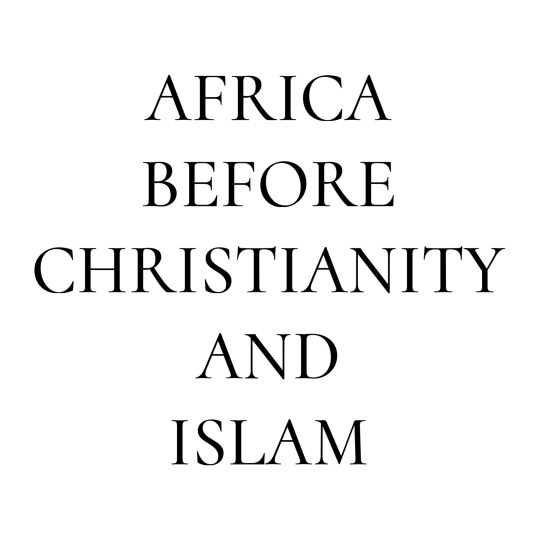
Africa has been very rich even before colonialism
The truth you should know about African
Blacks know your history and divinity
They gave us the Bible and stole our natural resources
Community and Social Cohesion: Traditional African religions often emphasized communal values, fostering a sense of belonging and mutual support within the community. Rituals and ceremonies were communal events that strengthened social ties.
Respect for Nature: Many African traditional religions were deeply connected to nature, promoting a harmonious relationship with the environment. This connection often led to sustainable practices and a respect for the natural world.
Ethical Guidelines: These religions often included moral and ethical guidelines that governed interpersonal relationships. Concepts such as honesty, hospitality, and respect for elders were commonly emphasized.
Cultural Identity: Traditional African religions played a crucial role in shaping cultural identity. They provided a framework for understanding the world, explaining origins, and passing down cultural practices through rituals, myths, and oral traditions.
Islam reached Nigeria through a combination of trade, migration, and cultural interactions. The trans-Saharan trade routes were crucial in bringing Islam to the region. Muslim traders from North Africa and the Middle East ventured into West Africa, establishing economic ties and introducing Islam to local communities.
The city-states along the trade routes, such as Kano and Katsina, became significant centers for Islamic influence. Merchants not only engaged in commercial activities but also played a role in spreading Islamic teachings. Over time, rulers and elites in these city-states embraced Islam, contributing to its gradual acceptance.
Additionally, the spread of Islam in Nigeria was facilitated by the activities of Islamic scholars and missionaries. Scholars known as clerics or Mallams played a key role in teaching Islamic principles and converting people to Islam. They often established Quranic schools and engaged in educational activities that promoted the understanding of Islamic teachings.
Military conquests also played a part in the expansion of Islam in Nigeria. Islamic empires, such as the Sokoto Caliphate in the 19th century, emerged through conquest and warfare, bringing Islam to new territories. The Sokoto Caliphate, led by Usman dan Fodio, sought to establish a strict Islamic state based on Sharia law.
Overall, the spread of Islam in Nigeria was a gradual process influenced by trade networks, migration, the activities of scholars, and, at times, military expansion. The interplay of these factors contributed to the integration of Islam into Nigerian society, shaping its cultural and religious landscape.
In the vast tapestry of Africa's rich cultural heritage, herbal traditional healing stands out as a profound and time-honored practice. African herbal traditional healers, often known as traditional or indigenous healers, play a vital role in the healthcare systems of many communities across the continent. Their practices are deeply rooted in the natural world, drawing on centuries-old wisdom and an intimate understanding of local flora.
African herbal traditional healers are custodians of ancient knowledge, passing down their expertise through generations. They serve as primary healthcare providers in many communities, addressing a wide range of physical, mental, and spiritual ailments. The healing process involves a holistic approach, considering the interconnectedness of the individual with their community and environment.
One of the hallmark features of African herbal traditional healers is their profound knowledge of medicinal plants. These healers have an intricate understanding of the properties, uses, and combinations of various herbs. Passed down through oral traditions, this knowledge is often a well-guarded family secret or shared within the apprentice-master relationship.
The methods employed by herbal traditional healers encompass diverse approaches. Herbal remedies, administered as infusions, decoctions, or ointments, form a significant part of their treatment. These remedies are carefully crafted based on the healer's understanding of the patient's symptoms, lifestyle, and spiritual condition. Additionally, rituals, ceremonies, and prayers are often incorporated into the healing process, acknowledging the interconnectedness of physical and spiritual well-being.
African herbal traditional healers frequently integrate spiritual elements into their practice. They believe that illness can be a manifestation of spiritual imbalances or disharmony. Through rituals and consultations with ancestors or spirits, healers seek to restore balance and harmony within the individual and the community.
Herbal traditional healers are integral to the social fabric of their communities. They often serve not only as healers but also as counselors, mediators, and keepers of cultural traditions. Their practices are deeply intertwined with community life, contributing to the resilience and cohesion of African societies.
While herbal traditional healing holds immense value, it faces challenges in the modern era. The encroachment of Western medicine, issues related to regulation and standardization, and the potential exploitation of traditional knowledge pose threats to this practice. However, there is also a growing recognition of the importance of integrating traditional healing into mainstream healthcare systems, leading to collaborative efforts to preserve and promote this valuable heritage.
African herbal traditional healers are bearers of an ancient legacy, embodying a profound connection between humanity and the natural world. Their healing practices, rooted in herbal wisdom and spiritual insights, offer a unique perspective on healthcare that complements modern medical approaches. Preserving and respecting the knowledge of these healers is not only crucial for the well-being of local communities but also for the broader appreciation of the diverse cultural tapestry that defines Africa.
#life#animals#culture#aesthetic#black history#history#blm blacklivesmatter#anime and manga#architecture#black community
162 notes
·
View notes
Text
The Old Guard x One piece AU got my brain going brrr and i'm gonna make it your problem now. Center of the matter is I want Zoro and Sanji to meet kind of like Nicki and Joe did (discovering their immortality by fighting on opposite sides and killing each other over and over and then becoming eternal lovers) so I went and did some research for the entire Straw hat crew. Main thing is I wanted to link them to historical events that will give them the right motivations and backgrounds! so here we GOOO
Sanji and Zoro: Because Japan has an isolationist past, the only battle I could find that would work is the Cagayan battles of 1582 in Jakarta between Spanish-Philippine forces vs Japanese pirates (a.k.a Wokou, which are basically pirate ronin)
Sanji would thus be a reluctant "Rodelero" sent to South East Asia by his noble family (jokes on them he loves being in the middle of the spice trade and he hates being part of a noble family funding the conquistadores) who one day finds himself fighting a mysterious Wokou samurai Zoro. They're partly isolated from their respective camps when they first kill each other, and again, and again, until they realise they should by all means be dead but they keep healing. After a couple decades of -against all odds- running into each other everywhere, they reluctantly decide to try and figure out what the heck's happened to them together- struggling to communicate at first, then learning each others' language over the following decade, then falling in love and becoming inseparable. This makes Zoro and Sanji both over 400 years old, and they are the same age. Zoro learns about so many sword techniques and Sanji about different cuisines/ leg-centric fighting styles during this time.
all the other straw hats and their historical periods under the cut!
Robin as an Egyptian scholar who died during the burning of the Library of Alexandria in 48 BC/ was killed for researching something forbidden during the declining years of the Roman Period (early 200s) and found out she was immortal this way, making her around 2 millennia old. She spends her time recording history and traveling the world and encountering new cultures. Her long time enemy is religious obscurantism, and the Catholic church spends a lot of resources trying to kill her. (they have conspiracy boards about this immortal witch in the Vatican)
Brook: so ancient he doesn't remember much, other that he came from Kerma culture (2500 BC), loved music, and that his entire village had died from an illness, but he came back. His memory isn't great but if there's one thing he's loved in his Millennia of existence is discovering and learning how to play all the instruments that he could find. He mostly hangs in Vienna nowadays as a music teacher.
Jinbei is a Samoan chieftain from around 1000 BC who one day died during a battle with a Fijian chieftain. When he came back from death he assumed Tagaloa chose him. He loves navigating, sailing, exploring and going on voyages with his people. In more recent times (post european contact) he was forced to ally with the US Navy to protect his people.
Nami: Irish lass from around 800 who's coastal, tiny village was about to be raided by Vikings from Sweden. She made a deal with their chieftain Arlong to go with them and map out the British isles for them to help their raids be more effective and targeted, in exchange for not killing people in her village, and that she would make back the plunder they did not get from this town for them. She started to join their raids to try and make this money, but she died in battle. She came back and they believed her to be some kind of Valkyrie or Einherjer brought back to midgard. She took over the raider's leadership- also Norsemen always had women handle money, which works great here. During her time as an immortal she travels, seeks treasure, double crosses people etc.
Usopp a young double agent/CIA spy from the Cold War who died on a mission. He tragically could not return to his love Kaya because he was afraid of putting her in danger by revealing he was alive to the spies that killed him. He relocates and starts anew constantly, his entire life a web of lies. He's a great marksman/sniper.
Chopper died young of the Bubonic plague in medieval Europe. He resuscitated, tragically his father is infected as well and he's unable to save him- motivating him to get to the bottom of this disease, he decides to become a doctor. Looking like a 15 year old for centuries doesn't make this task easy and he has to hide a lot.
Franky is an American veteran of WWI who was heavily disfigured first, and died later (which is why he's not fully healed and needs prosthetics). He's heavily anti-government from having been sent to fight in such a meaningless war that sacrificed young men like cannon fodder. He learned to fix himself up and make prosthetics and masks for veterans, got into making tech stuff
Luffy is a modern, 21st century 20 something year old from Brazil's favelas. He dies in a gun violence incident (maybe linked to a drug war/gang war where he's been trying to protect his neighbourhood) and comes back, experiencing visions of others like him. He's resolute to find them and make a crew, thinking that with all of them together, maybe they can help liberate the world from opressors and inequality
#it's one am#but i couldnt stop#did all the research i could to match each straw hat with a nice historic period#one piece au#zosan au#zosan fic idea#one piece fic idea#zoro x sanji#i just want the star crossed immortal lovers with lots of lore and cool adventures as#new immortal luffy just goes around collecting these people who have no idea there's others like them#and them going around liberating people#like the scariest undying ten people army that they are#the old guard one piece au#the old guard au#immortal straw hats#straw hat crew#zosan
105 notes
·
View notes
Photo
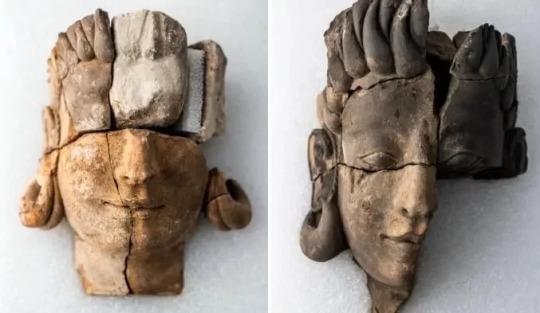
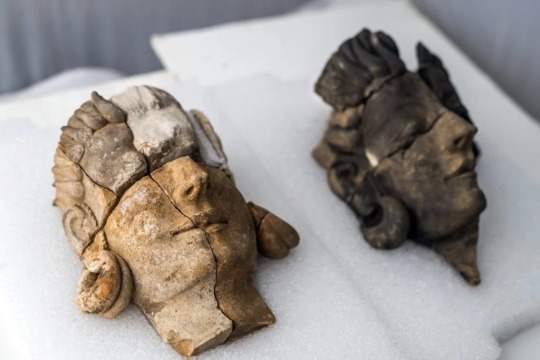
First Ever Human Depiction of Lost Tartessos Civilization Uncovered in Spain
Archaeologists representing Spain’s National Research Council (CSIS) excavating at the site of Casas del Turunuelo have uncovered the first human representations of the ancient Tartessos people.
The incredible results of an excavation that shed light on a mysterious and ancient civilization that flourished in southern Spain several centuries before Christ have been presented by Spain’s National Research Council.
The Tartessians, who are thought to have lived in southern Iberia (modern-day Andalusia and Extremadura), are regarded as one of the earliest Western European civilizations, and possibly the first to thrive in the Iberian Peninsula.
In the southwest of Spain’s Iberian Peninsula, the Tartessos culture first appeared in the Late Bronze Age. The culture is distinguished by a blend of local Paleo-Hispanic and Phoenician traits, as well as the use of a now-extinct language known as Tartessian. The Tartessos people were skilled in metallurgy and metal working, creating ornate objects and decorative items.
Archaeologists from Spain’s National Research Council (CSIS) on Tuesday presented the amazing results of excavation at the Casas de Turuuelo dig in Badajoz, in southwest Spain, as well as the results of the excavation.
Five busts, damaged but two of which maintain a great degree of detail, are the first human and facial representations of the Tartessian people that the modern world has ever seen.
The ornate depiction of the stone busts, as well the inclusion of jewellery (hoop earrings) and their particular hairstyles, resemble ancient sculptures from the Middle East and Asia.
These “extraordinary findings” represent a “profound paradigm shift” in the interpretation of Tartessian culture, excavation leaders Celestino Pérez and Esther Rodríguez said during the press conference.
Given the scarcity of Tartessian archaeological finds thus far, this ancient society is shrouded in mystery.
Tartessos’ port was located at the mouth of the Guadalquivir river in what is now Cádiz, according to historical records. In the fourth century BC, Greek historian Ephorus described it as a prosperous civilization centered on the production and trade of tin, gold, and other metals.
What is unknown is where the Tartessians came from, whether they were an indigenous tribe with Eastern influences or a Phoenician colony that settled beyond the Pillars of Hercules (the Strait of Gibraltar).
The team from Mérida’s Institute of Archaeology believes two of the busts discovered in what is thought to be a shrine or pantheon represent Tartessian goddesses, despite the fact that Tartessian religion was previously thought to be aniconic (opposed to the use of idols or images).
The stone busts’ facial depiction, as well as the inclusion of jewelry (hoop earrings) and their specific hairstyles, resemble ancient sculptures from the Middle East and Asia.
Archaeologists believe that the two goddesses, along with three other sculptures that were significantly more damaged, were part of a stone mural depicting four deities watching over a Tartessian warrior, as one of the defaced busts has a helmet.
The ornate effigies, which are thought to be around 2,500 years old, are also significant for art historians, as Ancient Greece and Etruria (an ancient civilization in modern-day central Italy) was previously recognized as the epicenters of sculpting during this time period.
By Leman Altuntaş.
#First Ever Human Depiction of Lost Tartessos Civilization Uncovered in Spain#Casas del Turuñuelo#ancient artifacts#archeology#archeolgst#history#history news#ancient history#ancient culture#ancient civilizations
301 notes
·
View notes
Text

'Save Iraqi Culture' - a surreal monument depicting a five-armed giant supporting a toppling cylinder seal; Baghdad, Iraq : In 2010, a bizarre sculpture was unveiled in the Mansour district of Baghdad, Iraq. Designed by renowned sculptor Mohammed Ghani Hikmat, it depicts a muscular giant supporting a Sumerian-style cylinder seal, which is broken at the base and toppling, using all his five arms. When deciphered, the cuneiform on the cylinder seal reads “writing began here” in reference to the Mesopotamian civilization’s role in the development of writing systems. Commissioned by the mayor of Baghdad, it was part of the city’s attempt to improve its long-tarnished image, to promote the richness of Iraqi culture and history. The area of what is modern Iraq was the birthplace one of the earliest human civilizations. A long series of literate cultures, cities, kingdoms and empires emerged in Fertile Crescent between Tigris and Euphrates rivers. When Alexander the Great entered the gates of Babylon at the head of his armies, he was an upstart, while Iraq was the home of what was already an ancient civilization. Sumerian civilization emerged in Iraq about 4000 BC. It evolved a rich and complex culture; built cities, temples and palaces; and developed sophisticated irrigation systems for large-scale agriculture. Sumerians also developed the earliest system of writing cuneiform in which they recorded their myths such as the famous “Epic of Gilgamesh.” Sumerians invented the wheel about 3700 BC and a system of mathematics. Sumerians were followed by the Babylonians and the Assyrians. King Hammurabi of Babylon promulgated a famous law-code, which was a landmark in the development of a system of social justice. Biblical Abraham, spiritual father of Judaism, Christianity and Islam, was originally from the city of Ur in Iraq. Assyrians further developed geometry and medical science. Alexander‘s conquest led the building of Greek cities and the spread of Hellenistic culture. Finally, Iraq was absorbed into the Persian Empire until the rise of the Muslim empires in 7th Century AD. Baghdad became the capital of the Abbasid Empire in 8th Century. This cosmopolitan commercial city was a famous center of culture and learning. It was regarded as the intellectual center of the world, standing at the crossroads of the trade routes between Europe, Byzantium, Middle East, India and China. Arab, Greek and Persian cultures mingled, and philosophy, science, medicine, literature and the arts flourished in universities and the court. Arabic became the primary language and most of the people gradually converted to Islam. Christians and Jews lived with Muslims in relative harmony as worshipers of the one God. The Empire reached from the borders of China to the Mediterranean and northern Africa. Catastrophe struck with Mongol invasions of Genghis Khan and his successors in 13th Century. Baghdad was conquered and the countryside devastated. The entire region went into decline. Irrigation systems collapsed and agriculture declined to be replaced by swamps and marshes. European discovery of a route around Africa to India led the decline of trade and commerce through Iraq. Urban society declined and the people turned to tribally-based pastoral nomadism. It was a “dark age.” In 17th Century, Iraq became a province of the Turkish Ottoman Empire until British took over after WWI. Britain set up a monarchy which became independent in 1932.
16 notes
·
View notes
Text
Guardianship of Jerusalem
Jerusalem, the most sought out middle eastern city in history. An important city for three of the five major religions in the world, so of course people are still fighting over it like children over a toy.
When the borders were first established(favoring the Zionists over the Palestinians), the UN decided that Jerusalem would be under their jurisdiction as to prevent Israel and Palestine from fighting over it. And of course they underestimated the Zionists desire to make the city their capital even though they had over 50% of the land. If the UN thought that the Zionists would have been satisfied with controlling half of the city and Palestine having the other half then they must have been surprised when the six days war happened and Israel trying to annex all of historic Palestine and then some. What did they expect giving a bunch of fascists that much land and power?
I have stated before that the Israeli government doesn’t understand the importance of Jerusalem and only sees it as a trophy. It’s because they are trying to make it into a Jewish city, fitting for a Jewish state. But Jerusalem is not a Jewish city, it’s a cosmopolitan one. And since it’s a cosmopolitan city then Israel is unfit to govern it by default because they have no interest in being cosmopolitan.
You’re probably wondering “Then who should govern west Jerusalem instead?”, well that’s easy to answer: Palestine.
When the Ottoman Empire let the locals govern their country mostly independent, the Palestinians let people from other countries not only to pray and trade in the city but they let them live and work there too. Maybe you didn’t know this, but Jerusalem is not only a center for religious worship but also a center for trade in the Middle East. Palestine actually made the city more prosperous by creating a network of trade between Jerusalem, Gaza and Jaffa. I have talked about this in a previous post about Palestine’s history.
To summarize: Palestine can abide by being a cosmopolitan country, Israel, however, does not. So if the UN are deciding to where to put the borders between Israel and Palestine, then they should make new ones, not just using the old racist ones from 1967. And have Palestine be the lone custodian of Jerusalem as to preserve its diverse history and culture.
If you want to learn about Palestine’s history before the westerners made their lives hell, watch this documentary on the subject:
youtube
#palestine#free palestine#gaza#free gaza#israel#jerusalem#israel is a terrorist state#palestinian culture#i stand with palestine#palestine genocide#palestine will be free#palestinian resistance#palestinians#save palestine#tel aviv#boycott israel#israel is committing genocide#israel is evil#stop israel#islam#christianity#judaism#ethnic cleansing#gaza under siege#gaza under attack#palestinian statehood#Youtube
43 notes
·
View notes
Text
you got your known Minoans and your unknown Minoans (part three)
(reposted, with edits, from Twitter)
(part one, part two on Tumblr)
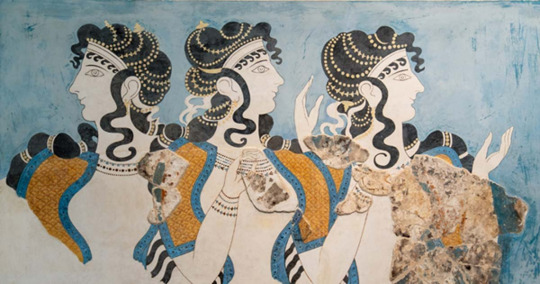
So, in Part One of this I talked about the Boston Goddess and how she’s probably a forgery, and in Part Two I talked about Arthur Evans and how much of a prat he was.
Now onto how we got a “Minoan” civilization.
"Minoan" refers to the idea that Crete was led by King Minos, who ruled a mighty maritime empire from the island. He's mentioned by Thucydides and Herodotus, and IIRC, there's been stuff found in Mesopotamian ruins made with materials that may have come from Crete. (A reference in the Tanakh supports the idea that trade--and battle--with Cretans was going on for a long time.) So it's likely that the ancient Cretans, during the period that we now call "Minoan," were part of an active, interconnected Mediterranean society that stretched from Persia to Greece, that they were a powerful maritime culture, and even possibly had a king named Minos.
(Irony sidebar: in all of this Victorian rush to prove the superiority of European culture over that of the ancient Near East and Africa, they're lionizing a dude who's the son of Europa, a Phoenician (Canaanite) princess. Like, the very NAME comes from a Middle Eastern woman.)
So anyway, because Diodoros distinguished between two different kings named Minos, Arthur Evans decided that "Minos" was actually a title like "Pharaoh" rather than a name (because that's... way more likely than being named for a great-grandparent?). Thus, "Minoan" could be used to refer to the culture of Bronze Age Crete. Voila. The Minoans.
And, okay: We had to call them something, and we don't know what they called themselves because they left behind no writing that we can read.
We might, however, have tried our best to call them whatever they called themselves, or at least what their contemporaries called their culture, which according to Egyptian and Neo-Assyrian records was probably Keftiu or Kaptara. I guess a British guy needed to name them?
Rule Britann--I Mean, Minoannia
Anyway, Evans had a model in mind for his attempts to reconstruct this society, and that model was another "benevolent" island empire: the British Empire and its ruler, Queen Victoria. With some flourishes from Egypt and Mesopotamia, of course.
He definitely had a very specific project in his fascination with the area, and that was to prove that ancient Europeans were as literate as their Near Eastern/African contemporaries. So he was on the hunt for script, carved gemstones with "alphabetic"-looking symbols, anything.
Now, I dunno, it might be worth stepping back for a moment here and asking WHY this particular signifier was so important. Our entire conception of what makes a "sophisticated" or "important" society is largely based on what records they leave behind. And we tend to focus on writing because the modern West is a very writing-centered culture. But cultures that don't center writing aren't necessarily less sophisticated (and we might even question what we mean by "sophistication"). They're definitely not objectively "better." They're just easier for us to understand, because unless their descendants are still maintaining those oral traditions, we don't know what they are.
The Best Tablet Is a Tabula Rasa
The Minoans did employ a writing system, of course, but it hasn't been deciphered. So all we really can know about them comes from their art, architecture, objects, etc. They can't talk to us the way, say, the Sumerians can.
Ironically, despite Arthur Evans' obsession with using the Minoans to prove ancient European literacy, it ended up being far more convenient for him (and other Victorians of his mindset generally) that they didn't have any writings we could read.
Blank slate.
He could make them into whatever he needed them to be, because there weren’t any of their own words around (that we can decipher) to contradict him.
So anyway, giant palace at Knossos, CLEARLY King Minos's palace. Evans found some inscribed tablets there and decided they must be the Law of Minos. Evans declared Minos "another Moses or Hammurabi, receiving the law from the hands of the divinity himself..."
They were deciphered after his death, and turned out to most likely be Mycenaean, not Minoan. They were also inventory lists, not laws.
He found a big chair, called it the "Throne of Ariadne," but later changed his mind and decided it was the seat of a priest-king, and declared it "the oldest throne in Europe."
He wrote volumes about how (in Lapatin's words) it was a "peaceful European island nation, led by an enlightened aristocracy, ruling a maritime empire and producing sophisticated, refined artworks." You know, like England, or at least England in the minds of the English.
He compared it to Florence under the Medici, to the princely establishments of Germany, to places in France. And of course, everyone else took up that note. The figure in this fresco was dubbed La Parisienne.
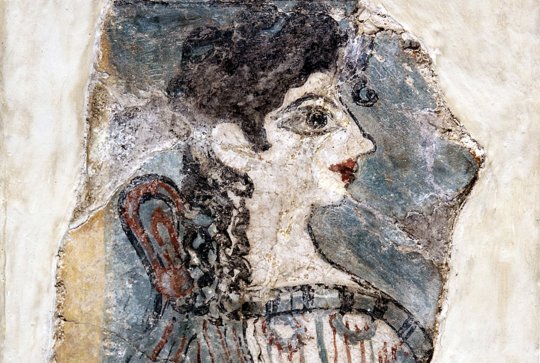
Image: La Parisienne, who looks Parisian, I guess.
And Evans wrote "there has come into view a primitive European civilization, the earliest phase of which goes back even beyond the days of the First Dynasty of Egypt." Hor-Aha took the throne around 3100 BCE, but okay, I guess?
So anyway, Evans believed that the Minoans were superior to their successors, and to the Mycenaeans of the Greek mainland, who he characterized as completely dependent on the Minoans. Citation needed, as we poor unenlightened Internetters would say.
I Promised You Isadora Duncan Being Insufferable, Didn’t I?
But of course ancient Greece was all the rage, from Leighton's paintings of Greek ladies chatting to Isadora Duncan and Nijinsky bringing classical influences into dance.

Image: Leighton painting of very blonde ancient Greek women.
And the Minoan art style was so pleasingly modern! Like Art Noveau! Put a pin in that. We’re coming back to it.
So anyway, Isadora Duncan.
She showed up at Knossos, where, upon seeing the Grand Staircase, she "could not contain herself and threw herself into one of her impromptu dances." She sounds utterly insufferable, no?

Image: Isadora Duncan, when no one actually asked her to dance, probably.
Her whole thing was being scared of ragtime because Black people (I'm not making this up). Like, she was Henry Ford and square dancing before Henry Ford and square dancing, so it’s probably not a huge surprise that she was all over “archaeology” “proving” the superiority of white people.
Pretty sure what everyone ACTUALLY liked about her was her costumes, but I digress again.
The Nice Thing About Gaps Is You Can Fill Them With Anything You Want
Back to the art.
So cool, right? Looks almost modern! Almost Art Nouveau.
Interesting how these ancient frescos happen to have an art style that looks so much like an art style that just happened to be popular when they were discovered.
Almost Erté-like, you could say:

Or maybe a little bit Harry Clarke?

Just a bit?

I’m just saying:

What if I told you we really had no idea what that fresco looked like?
The thing is, there was barely any of it left:

You can see the fragments that were left in the above image (and even those are “restored”). There wasn’t much to work with.
Evans brought in Émile Gilliéron, or rather, the Émile Gilliérons, a father-son team with the same names, to restore the fresco, working from earlier “restorations.”
The guys did beautiful paintings, no argument there:

The only problem is that these “restorations” were used to better understand Minoan culture and, like, this fresco (known as the “Saffron Gatherer” was actually of a monkey?

Yeah, turns out, based on art from other nearby areas, saffron gathering was done by women and leashed monkeys, not boys.
The Émiles may also have straight-up forged a bunch of artifacts there, according to Lapatin.
So anyway, Arthur Evans wanted to find a European civilization that was more ancient and sophisticated than the ones in the East, and he just happened to find one that couldn’t speak for itself, and just happened to have art that proved its “sophistication” by looking familiar and modern, but just exotic enough to feel like it might be ancient.
Part Four: Evans Worldbuilds a Matriarchal Religion (but don’t worry, it was just an “inferior” stage of development before patriarchy)
#archaeology#minoans#arthur evans#crete#white supremacist archaeology#snake goddess#art forgery#blue ladies fresco#minoan art#isadora duncan#minoan
31 notes
·
View notes
Text
Exploring the Benefits of Obtaining a General Trading License in Dubai Mainland
Dubai is more than a city famous for high rises like burj khalifa and burj-al-arab. Here, you can actually give wings to your business aspirations in so many ways. This is where the city of dubai and the entire middle east come as a good potential for business aspirants from around the world. So, in case if you are you're considering starting a business in Dubai, you first need to get a license or a permit. That said, this license would help you run your business anywhere in the city without any issues. That said, let’s dig into the key elements of the process that can help you achieve this goal in the right manner possible. Moreover, we will tell you the entire process to obtain a general trading license in Dubai mainland.

Dubai offers a myriad of business opportunities to everyone!
The city of Dubai got something for everyone in its heart. That said, if you can successfully obtain the general trading license in Dubai mainland, you can go places in the city’s markets. On the other side, you can try your luck in domains like retail, import, export, and so on. This way, you can also get benefitted out of the international financial centers within the heart of the city. So, right within no time, you can make use of a lot of opportunities you way just by getting the license for your business.
At the same time, the license will help you target the local customers and even the entire local UAE market. That said, you can start your business anywhere in Dubai, including the prime locations of the city. So, regardless of your nationality, you can really get into the business markets of the city without any challenges or hassles.
Leverage Dubai’s reputation as an International Trading center
Right within no time, Dubai has earned the reputation of a global trading center. Also, with a Dubai mainland license, you'll be able to export and import products across any part of the world without any hassles. At the same time, you’ll advantage from Dubai's world-class system, including cutting edge ports, air ports, and logistical offices, which can altogether, streamline your trade operations.
Minimal capital requirements
Unlike a few other business setups, a general trading license in Dubai mainland does not require a minimal capital investment. Moreover, this implies you have more control over your financial resources and can allocate funds as per your business needs.
Bigger control over the ownership
In Dubai mainland, you'll have up to 100% ownership of your business under certain conditions. Also, this level of possession control may be a noteworthy advantage, because it permits you to create choices freely without the need for a local sponsor or partner.
A bigger client base
Dubai is a city that is known for its mixed cultural diversity, drawing in people and visitors from all over the world. Also, with a general trading license, you'll be able to cater to this assorted client base and offer a wide list of products or services to meet their needs. Also, this can boost your business's development potential and income.
Increased opportunity to get Government Contracts
The UAE government regularly grants contracts to local businesses. That said, having a trading license in Dubai territory can make your business qualified for government contracts, giving a steady income source and important business opportunities
Increased Networking opportunities
Dubai is known for its dynamic business community and networking events. Moreover, with a mainland trading license, you'll effectively take part in these events, interface with industry peers, and investigate potential organizations or collaborations. Moreover, this can open entryways to new business options and development prospects.
Investor-Friendly Environment
Dubai's business-friendly approaches and controls make it an appealing destination for foreign investors. Moreover, the government ceaselessly strives to make efforts to initiate ease of doing business, making it less demanding for businessman to set up and setup their companies.
Tax benefits
Whereas there's a 5% value-added tax (VAT) in the UAE, there's no individual income tax or corporate tax for most businesses. That said, this tax-friendly environment can altogether diminish your trade costs and increment your benefits.
Final words
Hence, we can say that securing a general trading license in dubai mainland can be a vital move for business visionaries looking to tap into its diverse markets and a business-friendly environment. Also, the advantages, such as differing trade opportunities, full market access, and ownership control, make it an enticing alternative for both local and international business visionaries.
In case that you're considering beginning a business in Dubai, this license type can be a key to your success, offering desired outcomes and opportunities for growth in this flourishing financial hub.
3 notes
·
View notes
Text
Willkommen to Ulmich!
This is the unnecessary consequence of me wanting the protagonist of a shitfic to be a silly german middle aged woman. Please accept this funky little map before I open the exposition floodgates!
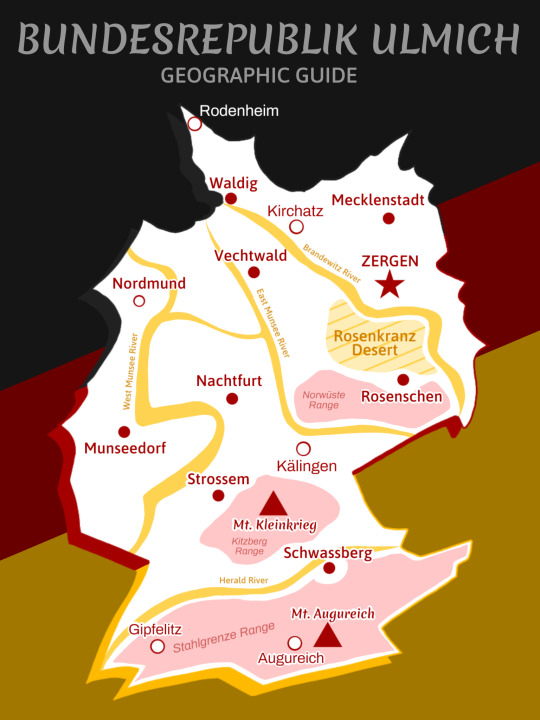
General Information
Ulmich is a region in what would be Pokemon's equivalency of Europe. It's pretty much just a yassified PokeGermany. It's in the center of this alleged "PokeContinent," and shares a border with the Kalos region to the west.
The official language of Ulmich is Ulmichan (which is just German), though most Ulmichans are bilingual, fluent in both their native tongue and either Galarian (English), Kalosian (French), or another.
The legendary Pokemon of Ulmich is Bundesaetos, a regal black eagle that Ulmich credits as its founder. Instead of using "Arceus" as a sort of stand-in word for "God," Ulmichans will often use "Bundesaetos" instead. This is not to say Bundesaetos usurps Arceus as a God, but rather that it's such an important piece of Ulmichan culture that it warrants its own everyday use.
Despite this, Bundesaetos hasn't been sighted in quite some time.
Cities [In Order of Population]
Zergen is the capital of Ulmich, as well as its most populated city. It's the industrial, financial, and government heartland of the region, a true concrete jungle if the country ever had one. This city is quite fast-paced and crowded, so cars aren't the most effective form of transportation. Instead, Zergen's got quite the underground transit system, providing commuters access to most of the city.
Additionally, Zergen is home to Zergen International Airport (ZIA), and Zergen University, among others. As far as the Pokemon League goes, Zergen has no gyms, nor is it the home of the Elite Four - but it's a must on the bucket list for tourists!
Waldig is the second most populated city in Ulmich but definitely has Zergen beat in terms of trade. It's the one Ulmich city that's right on the sea. Besides ingoing cargo ships from Galar, Kalos, or Paldea, Waldig has quite a lovely maritime beachfront and a shockingly successful cruise industry! Waldig is home to Ulmich's first and easiest gym, specializing in Water-type Pokemon.
Schwassberg is the third most populated city in Ulmich, which is quite ironic considering its placement in the more treacherous reaches of the region. However, it's mostly unperturbed by the Stahlgrenze Range due to its placement juuuust outside of its boundaries. Schwassberg residents are noticeably more laid-back than most other Ulmichans, and this is exemplified best in their world-renowned annual beer festival (Yes, we're talking Oktoberfest). You're gonna see a lot of silly Unovans come to Schwassberg for a keg or two.
Schwassberg hosts the eighth and final gym, as well as the most difficult. Considering the range that surrounds it, it's appropriate that the gym specializes in the Steel-type.
Munseedorf, lying right by the heart of the West Munsee River, is home to lovely scenery alongside the calming sounds of Munsee's current. Being closest to Kalos, a lot of Munseedorf's population is fluent in Kalosian, and the general culture is much more mixed between Kalos and Ulmich than in other parts of the region. Munseedorf houses the sixth gym, specializing in Grass-type Pokemon.
Strossem borders the Kitzberg Range to the east. As such, the city provides lovely, albeit daunting views of Mt. Kleinkrieg. Known for the "Strossem Sausage" and a thriving skiing industry, the city's doing quite well for itself. Strossem is home to the seventh gym in the Pokemon League lineup, specializing in the Bug-type.
Nachtfurt is the closest to what you could consider smack-dab in the middle of the region. It is widely considered as the "garden city" of Ulmich, as even the most urbanized squares of Nachtfurt are sprawling with gardens and forest cover. It's definitely got a gothic academia vibe. Nachtfurt is home to the fifth gym, which specializes in Ghost-type Pokemon.
Vechtwald, aside from Zergen, must be Ulmich's most blatantly historic city. Walking around the central streets will display a centuries-long myriad of architecture, from the newest marketplace to the oldest cathedral. Vechtwald is home to the second Pokemon gym, working with Dark-types.
Rosenschen is a city caught in the aridest part of Ulmich. Surrounded by the Rosenkranz Desert and Norwuste Range, Bundesaetos knows that it's a bit hard for things to grow. Citizens make it work, though, capitalizing on a sort of cowboy aesthetic to attract tourism. Rosenschen's gym is fourth in the League lineup, focusing on the Ground-type.
Mecklenstadt is the ninth and final city of note in the Ulmich Region. While it's not a buzzing metropolis, Mecklenstadt is quaint and historic, a much less busybodied rendition of Zergen. The city itself is probably best known for both its many Pokemon sanctuaries alongside its monopoly on Ulmich's northeastern beachfront. Mecklenstadt houses the third gym in the Ulmich League, Dragon-type in nature.
Towns and Villages
Rodenheim is the northernmost settlement in the Ulmich Region, situated at the very crest. It's like Waldig, but a much more downsized and rural version. If Ulmich were a game, Rodenheim would be the player's hometown.
Nordmund is primarily known as a fun art town. Have you got a love of gardens, old imperial palaces, and chocolate? Nordmund's got you covered, so long as you can put up with pretentious hipsters.
Kirchatz is very similar to Vechtwald in the old architecture field, minus the city aspect or secularism. Kirchatz people tend to be pretty religious, so if you're an Arceus-fearing fellow then I suppose you'd be right where you ought to be. For the rest of us, it's a bit awkward - but at least the churches look pretty.
Kalingen is a glorified rest stop. I believe in Kalingen slander.
Augureich, sitting right at the base of Ulmich's highest peak, is a village absolutely pelted by rain and snow. Augureich's a mining town, to be sure, but it's also full of spirituality and mystique. Legends say that Augureich was the birthplace of Bundesaetos. If you manage to outlast the blizzard on the way, here's to hoping you have enough money for a monk!
Gipfelitz, Ulmich's southwesternmost point, is the home of the Pokemon League itself. That's right - this little place is where the Elite Four and Champion conduct business. In Gipfelitz, upon a horizontal mountain face, belies a massive cathedral: The Pokemon League building. Walk right on in! If you dare.
Waterways
River Munsee is Ulmich's longest river, spanning out to reach across much of the northern and central reaches. Because of its shape, Munsee is divided into two parts: East and West Munsee. These rivers are vital for the prosperity of Munseedorf, Nachtfurt, Nordmund, Vechtwald, Strossem, and Kalingen.
Brandewitz River is the lifeline of Zergen and Waldig, and certainly the busiest waterway in the region as a result. Both cities use Brandewitz to ship their cargo to and from their ports, as well as the rest of Ulmich through smaller channels.
Herald River is the most straightforward river geographically speaking, but it's a lot more turbulent than Munsee or Brandewitz, with rapids in some areas that will not hesitate to knock you down. Schwassbergians really love to paddle around in it though, so I guess it's not so bad.
Mountains and Deserts
Rosenkranz Desert is the one and only desert (or prairie area, for that matter) in the Ulmich Region. In real life, Germany doesn't have any deserts - at least not truly, but south of Berlin (or Zergen, in this case) lies a pocket of pseudo-desert area referred to as the Lieberoser Desert. Rosenkranz is based on that pocket, though a lot drier. While not a sand dune type of desert, it's an area more similar to a desertified prairie land.
Norwuste Range is Ulmich's third tallest range. There's not much to write home about other than it being much tamer than Kitzberg or Stahlgrenze. Not to mention drier.
The Kitzberg Mountain Range is Ulmich's second tallest range altogether, and home to the second tallest peak in Ulmich: Mt. Kleinkrieg. The peak's name, meaning "little war," is well deserved, considering how dangerous it can really be to climb. While not as tall as Augureich, it's imposing on its own. Climbers, please perform your due diligence.
The Stahlgrenze Mountains are Ulmich's tallest range, housing Mt. Augureich, the region's highest summit. If Kleinkrieg's a freakshow, then wait till you see Augureich. The thing's surrounded by a nonstop blizzard, and if that wasn't bad enough, it also happens to be an active volcano. You see, unlike Kleinkrieg, there is NO climbing Augureich. Should you ever decide to ignore my warnings and climb the glorified death rock anyway, here's to hoping the monks in the town can give you a blessing or two before you depart. Happy days!
I've been working at this for two hours at the VERY least so I'm gonna tap out now. But if you're seeing this, thanks for sticking around! I bringeth upon thee a star sticker ⭐
#pokemon#pokemon region#fakemon#fakemon region#germany#missy lore#missy draws#ulmich#bundesaetos#why do i do this to myself smh
12 notes
·
View notes
Text
Sources
Abuelezam, Nadia N., Awad, Germine H., Ajrouch, Kristine J., and Matthew Jaber Stiffler. 2022. “Lack of Arab or Middle Eastern and North African Health Data Undermines Assessment of Health Disparities.” American Journal of Public Health 112(2):209–12
Awad, Germine H., Hanan Hashem, and Hien Nguyen. 2021. “Identity and Ethnic/Racial Self-Labeling among Americans of Arab or Middle Eastern and North African Descent.” Identity 21(2):115–30
Arab American. “Dept. of Justice Affirms Arab Race in 1909: The Arab American Historical Foundation Home.” Arab American. Retrieved April 26, 2023 (https://www.arabamericanhistory.org/archives/dept-of-justice-affirms-arab-race-in-1909/).
Beydoun, Khaled A. 2014. “Between Muslim and White: The Legal Construction of Arab American Identity.” SSRN. Retrieved September 25, 2022 (https://papers.ssrn.com/sol3/papers.cfm?abstract_id=2529506)
The Federal Register. Federal Register :: Request Access. Retrieved April 13, 2023 (https://www.federalregister.gov/documents/2023/01/27/2023-01635/initial-proposals-for-u pdating-ombs-race-and-ethnicity-statistical-standards).
Griffith, Bryan. 2002. “Immigrants from the Middle East.” CIS.org. Retrieved September 25, 2022 (https://cis.org/Report/Immigrants-Middle-East).
Haney-López Ian. 2006. in White by law: The Legal Construction of Race (Critical America). New York University Press.
Maghbouleh, Neda, Ariela Schachter, and René D. Flores. 2022. “Middle Eastern and North African Americans May Not Be Perceived, nor Perceive Themselves, to Be White.” Proceedings of the National Academy of Sciences 119(7).
Office of the Federal Register, National Archives and Records Administration,. 1997. “Recommendations From the Interagency Committee for the Review of the Racial and Ethnic Standards to the Office of Management and Budget Concerning Changes to the Standards for the Classification of Federal Data on Race and Ethnicity.” 62 FR 36874, Retrieved September 25, 2022
Anon. n.d. “Middle East/North Africa (MENA).” United States Trade Representative. (https://ustr.gov/countries-regions/europe-middle-east/middle-east/north-africa).
Anon. n.d. “Middle Eastern and North African Americans May Not Be Perceived ... - PNAS.”
Fukuyama, Francis. 2019. Identity: The Demand for Dignity and the Politics of Resentment. New York, NY: Picador.
Louise Cainkar. n.d. “MENA Americans: A Socially Disadvantaged Group.”
(https://www2.mu.edu/social-cultural-sciences/directory/documents/cainkar-mena-reports.pdf).
Mora, G. Cristina. 2014. Making Hispanics: How Activists, Bureaucrats, and Media Constructed a New American. Chicago: The University of Chicago Press.
Aziz, Sahar F. 2020. “Legally White, Socially Brown: Racialization of Middle Eastern Americans.” SSRN Electronic Journal.
Blake, John. 2010. “Arab- and Persian-American Campaign: 'Check It Right' on Census.” CNN. Retrieved April 26, 2023 (https://www.cnn.com/2010/US/04/01/census.check.it.right.campaign/).
Krogstad, Jens Manuel. 2020. “Census Bureau Explores New Middle East/North Africa Ethnic Category.” Pew Research Center. Retrieved April 26, 2023 (https://www.pewresearch.org/short-reads/2014/03/24/census-bureau-explores-new-middle-eastnorth-africa-ethnic-category/).
2 notes
·
View notes
Text
@anghraine Oh wait- okay so I always knew in my head that, even if the choice only matters for RP purposes because the game itself never references the race/gender/origins of the player character in a way that impacts the plotlines, that you play mostly human characters, so Hyur if you ever played XIV. And that of the two clan choices, Midlander is the generic from just about anywhere but the taller Highlander models are used mostly for Hyurs that originated from Ala Mhigo, the city state that had a geographical and political history of resource poor (except salt) highland in the center of the main trade route with the major cornerstone of their culture being their religious devotion to their patron deity and the fighting monks who also were deeply entrenched in their internal royal politics - the other major native DPS job being the magic rapier wielding class that does mostly spell-casting with a little bit of melee and some healing support. And that an extremely important main story element is how Ala Mhigo was conquered by the neighboring empire twenty years ago so there’s a sizeable Ala Mhigan diaspora and resistance movements and you’re helping out the factions and the political complications involved in the Base Game through multiple expansions. So, in my head, yeah, Elizabeth is an Ala Mhigan probably Red Mage. Visually the architecture and clothing is has elements of the Caucasus and Near Middle East to Western Steppe.
But! Elizabeth. I was thinking to myself how the equivalent race to the Charr in FF XIV are our Hrothgar, as our version of the fully cat-faced large and burly player race (who are based on FFX’s Ronso) as opposed to the less beastly more generic cat-earred race that is the most popular player race by far. And okay, the Hrothgar only have playable male options as of right now and we won’t get female options for Hrothgar until 7.0, the next expansion. But! the Hrothgar are not Charr, lorewise. Hilariously NOT. In fact, remembering what their lore was, I realized, omg what if. Because, okay that extremely expansionist imperialist religion-banning empire that conquered and subjugated Ala Mhigo? The empire ruled over by what are a Human subset without any magic and instead tech (unlike all other races) have been conquering a lot of places, trying to emulate the historical imperialistic high tech empire of Allag (The Romans to Garlemald’s Third Reich/Imperial Russia). And before they conquered Ala Mhigo, the other region that got the worst of their crimes -including the vaporizing of their capital city- and the country to whom we get extended plotlines about their preconquest, occupation, rebellion and rebuilding - is Bojza. Aka the main homeland of the Hrothgar. Whose naming structure is Slavic inspired and architecture is Mesopotamian. Where the city of Bojza had as its claim to fame being the holdout that resisted conquest from that original ‘Rome’, the only place to defeat Allag thanks to their queen. The Hrothgars whose ancestral weapon and combat style of gunblades was stolen and bastardized by the Garleans. Hrothgars who are explicitly set up as a matriarchal race, Bojza ruled by a queen with a council of priestesses. In fact the two sub-clan options of Hrothgars are divided up whether their clan has a matriarch or if she was lost (and the last names are the names of said matriarch). But they’re not a human race and I know you’d think Charr if see them.
#now i'm thinking to think of all my mutuals and assign them XIV WoLs#wondering hmm which one has the vibe that they would willingly play a Lalafell#i love y'all too much to think your tastes are so basic as to play a catgirl
1 note
·
View note
Text
Petra - part II - Good bye to Jordan
September 19, 2024
Salam from Cairo, Egypt. We have already visited the Egyptian Museum for a few hours today and OMG - I have so much to share - but….
Petra, Jordan, Part II
We left off - a hour into our trip at:

While water and wind have been the master sculptor of this land - the artists that carved this structure into the sandstone took those erosion elements into their plan. By “carving” this masterpiece recessed into the wall they have protected it. Such BRILLIANT forethought sometime between 100 BCE and !00 ACE. Not it is damaged - but the damage has all been manmade. IDIOTS - I say!
Check this out:

Bullets holes galore because that statue was a woman and she may be been bare-breasted - OH THE INHUMANITY!!!

This is the urn at the top o the building and many people believed that “urn” was filled with great riches - urns out the damned thing was just sandstone after all.
There is a basement and a gathering room carved but you can no longer enter. I did find a photo on the gathering room on the Internet - so here it is...

Pretty cool - huh?
I forgot to mention that Petra was first believed to be a city of tombs. Many of the carved out "rooms" were indeed a place where families buried their dead. But it turned out it was more than that.
But this is nothing compared to what awaited us just to the left of that structure. Another hour’s walk revealed an amazing town…











We had lunch in the middle of this city and some of us said “ENOUGH!” 6 miles of downhill was fabulous - but with one way in and one way out - Mark and I decided we had seen enough and hoped to survived to enjoy these discoveries. The more adventurous on our group opted for additional hikes before heading home. One hike was to the Monastery - and while we didn’t see it - we are good friends with many people who did. Yes - we missed a fabulous place!

Another hike was to a church - missed that too…🥴. BUT we did see the outside.

But inside was this - which we missed too. Oh well.

We opted for a golf cart ride out of this amazing city - and with more than 10 miles on the soles of our shoes - we were OK with that decision. Back in the hotel - after a quick nap - we headed out to the museum. AGAIN - what a great experience. Here are just some of the things we learned:
Petra was once a thriving trading center and the capital of the Nabataean empire between 400 B.C. and A.D. 106.
The Nabataeans, before they were conquered and absorbed into the Roman Empire, controlled a vast tract of the Middle East from modern-day Israel and Jordan into the northern Arabian peninsula. The remains of their innovative networks of water capture, storage, transport, and irrigation systems are found to this day throughout this area.
Scholars know the Nabataeans were in Petra since at least 312 B.C.
The city sat empty and in near ruin for centuries. Only in the early 1800s did a European traveler disguise himself in Bedouin costume and infiltrate the mysterious locale.
Archeologists specializing in the Nabataean period have been excavating in Petra since 1979 and no one has yet found any archaeological evidence dating back to the fourth century B.C. The earliest findings thus far date back only to the second and first centuries B.C.
Only 15% of this city has been excavated. REALLY!! Imagine that!!!
The Nabateans were expert water engineers. Here are some of their plumbing materials

They managed flood and drought. Impressive. Remember 100 BCE - 100 ACE
We finished the day with a lovely dinner with our fabulous trip leader, Nader. I have lots of pics - but I LOVE this pic of Joe and Daphne Slater and Nad. It truly sums up our entire trip in Jordan.

We have LOVED Jordan with its long history and delightful culture and wonderful people. I’m so happy we decided to come.
Tomorrow we head to Egypt and connect with the rest of our friends. Much learning ahead.
Salam
1 note
·
View note
Text
Exploring the Vibrant Culinary Scene of Calicut

Calicut, or Kozhikode as it's locally known, is a city steeped in history and culture. Renowned for its rich trading past, Calicut was once a major spice trade hub that connected the East with the West. Today, this historical city continues to be a melting pot of flavors, with a diverse and vibrant culinary scene that attracts food lovers from all over. From traditional Malabar delicacies to international cuisines, the restaurants in Calicut offer a gastronomic journey that's as rich and varied as the city's heritage.
A Taste of Tradition: Malabar Cuisine
Calicut's culinary identity is deeply rooted in Malabar cuisine, a flavorful and aromatic tradition that features an array of spices, coconut, and seafood. The city's restaurants are a testament to this legacy, offering dishes that have been passed down through generations.
Paragon Restaurant, one of the city's most iconic dining spots, has been serving traditional Malabar dishes since 1939. The restaurant is particularly famous for its Malabar Biryani, a fragrant and flavorful dish that perfectly encapsulates the essence of the region's cuisine. The delicate balance of spices and the use of short-grain rice give this biryani its distinctive taste, making it a must-try for anyone visiting the city.
Another staple in Calicut's culinary scene is Rahmath Hotel, known for its hearty and soul-satisfying biryanis. The restaurant's mutton biryani is a crowd favorite, offering tender meat that's infused with a rich blend of spices. The biryani here is often paired with a side of crispy chicken fry, a combination that's hard to beat.
For those looking to explore beyond biryani, Zain’s Hotel offers a range of traditional Malabar snacks and dishes. This quaint, family-run establishment is beloved for its authentic flavors and homely ambiance. Signature dishes like Unnakaya, a sweet and savory stuffed plantain, and Irachi Pathiri, a meat-filled pastry, showcase the diversity and richness of Malabar cuisine.
Coastal Delights: Seafood in Calicut
Given its coastal location, Calicut is a haven for seafood lovers. The city's proximity to the Arabian Sea ensures a steady supply of fresh fish, prawns, crabs, and other seafood, which feature prominently in the menus of many local restaurants.
The Lighthouse Restaurant, located by the beach, offers a serene dining experience with a view of the sea. The restaurant is known for its seafood platters, which feature a selection of the day's freshest catch, grilled to perfection. The Malabar Prawn Curry, a creamy and spicy dish, is another highlight that captures the flavors of the region.
At Sagar Restaurant, seafood takes center stage in a more traditional setting. This long-standing eatery is famous for its crab roast and prawn masala, both of which are cooked with a blend of spices that elevate the natural flavors of the seafood. Sagar's Kerala Sadya, a traditional vegetarian feast served on a banana leaf, is also worth trying for a taste of authentic local cuisine.
Fusion Flavors and Modern Dining
While Calicut is celebrated for its traditional fare, the city is also home to a growing number of restaurants that blend local flavors with international influences. These establishments cater to a diverse crowd, offering everything from Middle Eastern grills to European classics.
Kingsbay is one such restaurant that offers a fusion of Indian and continental cuisines. The restaurant's elegant ambiance and creative menu make it a popular choice for both locals and visitors. Dishes like Seafood Thermidor and Chicken Stroganoff are prepared with a unique twist, combining the best of local and international ingredients.
For a more contemporary dining experience, M-Grill offers a stylish setting and a menu that spans Indian, Arabic, and continental dishes. The restaurant is particularly known for its grilled meats and kebabs, which are marinated in a variety of spices and cooked to perfection. The mixed grill platter, featuring a selection of meats, is a great option for those looking to sample a bit of everything.
A Culinary Journey Through Calicut
0 notes
Text
on oz, its history, and general characteristics.

the land of oz is a vast, roughly rectangular parcel that sits in the midst of the deadly desert. the sands on each side are impassable for an ordinary person, although they can be crossed via flight. they are impassable because they are both magical and alive, seeking to devour whatever they touch; whatever living thing comes in contact with them will turn to sand themselves.
oz's founding and ruling:
the founding mythology of oz claims that four witches joined their power to summon living land out of the desert, creating the four quadrants of oz and each claiming a portion for herself to rule. this is not true, but has served as justification for centuries of rule by witch families in the north, south, east, and west. a following myth describes the institution of monarchy in the form of the ozian royal family, centered on the capital, the emerald city: the four witches were supposed to rule as a council or assembly, but infighting made it impossible, each jockeying for total control of oz, until the first king of oz established the emerald city as a political center and brought peace by uniting the quadrants under his rule.
the royal family of oz ruled until the arrival of the wizard (timeline to come), when he killed the king, pastorius, and seemingly his daughter and heir ozma. he assumed the king's role in the governing politics of oz, roughly a constitutional monarchy in which each currently-ruling witch represents the political interests of her region, with ultimate decision-making power resting with the wizard. the royal family, and now the wizard, has control of oz's standing army, as well as the majority of its tax revenue. having the wizard's ear is crucial for the well-being of one's region.
oz's regions:
the different regions of oz are vast and consist primarily of temperate biomes, especially forests in the west and south, with temperate grasslands and steppe in the east falling away into scrubland the closer it comes to the deadly desert. each region has its distinct characteristics, cultures, as well as a unique nickname as depicted on the map above (based on an LFB-approved map). these nicknames have a varying register depending on context, and using them can either be considered simply informal, all the way to outright rude and insulting.
a rough description of each region is as follows:
north: "gillikin country" is so-called because the people are "gilly": its central feature is the weathering river, which runs from some unknown source deep in the deadly desert through the center of the region and empties into a massive lake at the foot of the emerald city. with numerous branches of the river, other, smaller rivers, and many lakes, this is a region known for fishing, panning, water-based trade routes, and many tourist hotspots for healing and magical baths. (most of the popular, touristy locations have 0 magical efficacy whatsoever.)
south: "quadling country" earned its name from the traditional foodstuff of its inhabitants, a simple and heartening porridge called "quell" (similar to how rice, corn, pasta, etc. are traditional and culturally-important starches in certain areas of our world). "quadling" is in that sense a rude name based on the traditional food of the region. there is a long belt of old-growth forest that cuts across the lower middle of the region, with the land on the further side, nearest the deadly desert, considered poorer and less habitable. the northern half of the country, nearest the emerald city, is primarily used for agriculture, which forms the south's central economy.
east: "munchkin country" is rudely named because its inhabitants tend to be shorter by a head to a head-and-a-half than other ozians, with some outliers on either end of the spectrum. the belt of forest crossing the south stretches into the east and opens into a mountainous and forested area on the southeastern tip of this region, with the rest of the region consisting of temperate grassland (and scrubland nearer the deadly desert). although every part of oz has its own educational institutions, the east is known for its intellectual output with cities growing around colleges and universities, as well as a central river called the blue river (and sometimes, rudely, "munchkin river") that stretches into the north and connects them to valuable trade.
west: "winkie country" derives its name from the stereotype of a westerner: someone coming up from a dark mine, miserable and hunched, tilting up his face with a disfiguring squint as the sunlight blinds him. hence, "winkie." this is the most densely mountainous and hilly region of oz, with numerous vital deposits of ores and gemstones providing its economic engine. it is crucial territory given the need for certain gems and ores both by the state, the luxury economy, and by magical practitioners who depend on their certain specific qualities for success. however, it is also shrinking, rapidly losing land on the far west border to the encroachment of the deadly desert. more on this to come.
what might be called the fifth region of oz is, of course, the emerald city and its environs. more to come.
oz's culture, in broad strokes:
each region of oz has its own distinct culture, driven by its unique characteristics and economy. there is also a degree of insulation from each other region given the prevalence of mountains and dense forests across the whole of oz, although rivers--each zone having its own, central river and usually several smaller ones--provide vital transportation into and out of each cardinal region, as well as enabling trade and the flow of information.
all ozians speak the same language, usually just called "common," but each cardinal region has its own accent and traditional dialects, with more rural and especially more desert-bordering communities having thicker and less readily-comprehensible versions. there is also an accent typically found in the emerald city which other parts of oz describe as being nasal, clipped, and rapid. a dialect that is shared among regions, with some differences, is "river cant," spoken primarily by ozians who travel and work on the many rivers of the country.
the technologies available in oz are roughly equivalent to the technologies available in the mid-19th century. there are some train lines, especially from the emerald city to other cities, and especially within the east, which has railways connecting its major university towns. the emerald city as well as some other large population centers have trams, primarily horse-drawn although some neighborhoods use steam engines. that said, the majority of transportation is conducted via horse-drawn technologies, on water, or for the unlucky, on foot. there is a government-operated postal service. there are also printing presses and a broadly shared literary culture.
ozian culture is centered on a theme of hospitality, a value which is shared across all regions. traditional ozians feel a strong sense of obligation to neighbors and community, as well as to strangers in need. it's not uncommon to receive a knock on your door in a rainstorm with the expectation that you'll welcome in and shelter the traveler until it's safe for them to leave. that said, this tradition has been fading in recent generations, especially because the network of obligations in small communities has become strained by population growth and movement, as well as the development of larger cities. it also causes chafing and antagonism even among the most traditionalist ozians, simply because placing demands on others/having them placed on you can be very annoying.
1 note
·
View note
Text
KUWAIT
DAY ONE
To get to Kuwait, you have to have a passport valid for the last 6 months. You are not required to have a VISA if you are staying for under 30 days, and you aren't required to have any vaccinations, but recommend you get hepatitis A and B, rabies, polio, and measles. The national language is Arabic, and they use the Kuwaiti Dinar as their currency. The translation is $1 to 3.26 KD. You are required to have 3000 KD before entering the country, which is $9791.56. The capital is Kuwait City, and it has a population of 3.298 million, which is crazy considering that the population of Kuwait is only 4.269 million.
When I first got to Kuwait, I checked into my Airbnb located in Salmiya. It costs $114 a night, which is 34.93 KD a night. I am staying two nights, meaning it cost me 69.86 KD ($228.01).




After checking into my room, I did the Kuwait City Half Day Private Tour. Kuwait City is located 16 minutes away from Salmiya. The tour costs 22.98 KD ($75) and lasts 4 hours. Throughout the tour, you are taught about the history of Kuwait, the evolution of Kuwait City, and all about Kuwait culture. The tour guide makes sure to show you the most famous sights, which include the Kuwait Towers, Souq Al Mubarakiya, and Al Shaheed Park.
Kuwait Towers are three water towers. The main tower is 614 feet tall with two spheres, the second tower is 482 feet tall with only one sphere, and finally the third tower is 370 feet tall with no sphere. The bottom half of the lower sphere on the first tower holds 1.2 million gallons of water. The upper half is a restaurant, a café, a lounge, and a reception hall. The second sphere is a café. The sphere on the second tower is just full of water. There is 1.2 million gallons. Because the last tower has no sphere, it just holds equipment to fix the other towers if they ever break down in any way. The tour wouldn't let us eat at the café, so I will have to visit again on my own.
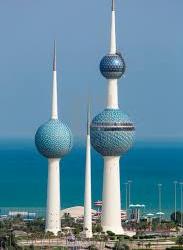
Souq Al Mubarakiya is a historic souq. A souq is an open-air marketplace. Souq Al Mubarakiya is the oldest Souq in Kuwait and the center of trade before the discovery of oil. The market has been around for 200 years. In 1990, it was damaged during the Iraqi invasion, but it has since been renovated. People sell, carpets, perfumes, antiques, jewelry, costumes, dates, spices, fruits and veggies, meat and fish, and honey.

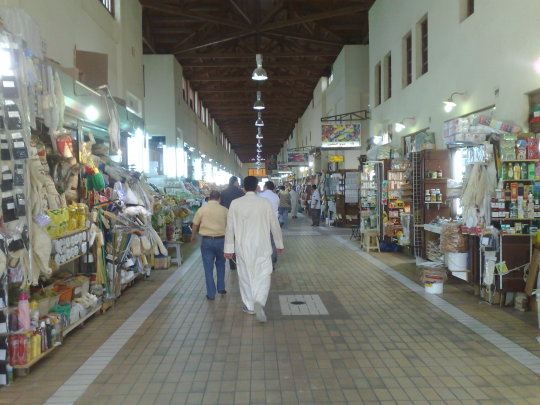
Al Shaheed Park is the largest urban park, which stretches about 78.5 acres. It has one of the largest overstructure greenroofs in the world. The park holds two museums. The Memorial Museum and The Habitat Museum. The Memorial Museum that shows important events in Kuwaiti history. In the center of the museum, there are four icons that symbolize the four most significant battles in Kuwait History. The Habitat Museum shows the natural habitats of Kuwait. They have recreations of plants and animals that are extremely common to see in Kuwait.


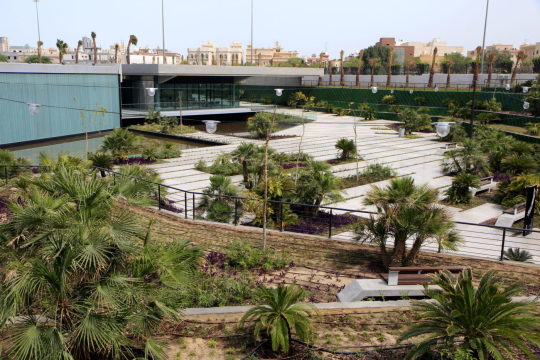

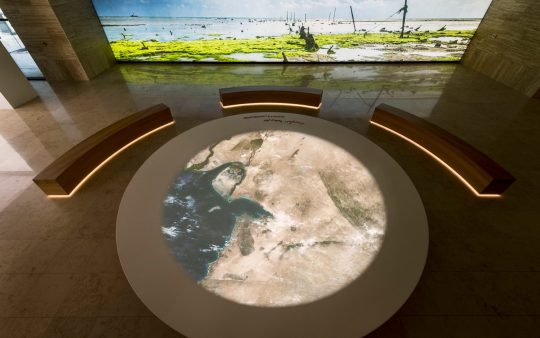
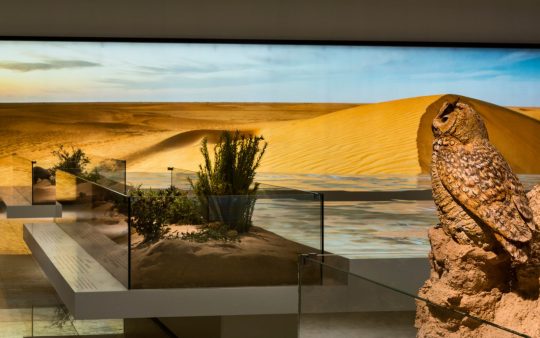
After the tour, I decided to go get something to eat back in Salmiya. I decided to eat at Mughal Mahal Salmiya Marina Plaza, one of the top halal restaurants in Kuwait. Halal food are foods that are made, produced, or manufactured using machinery or utensils that have been cleaned due to Islamic law. I decided to get some noodles. I got the Chili Garlic Chicken Noodle, which cost 3.450 KD ($11.26). Along with the noodles, I got 6 pieces of Chicken Lollipop, which is just chicken legs. That cost 2.750 KD ($8.98). To drink, I got a small Laban Mango Lassi. Laban is a fermented milk drink made from strained yogurt, and it is extremely popular in the Middle East. The drink cost 1.350 KD ($4.41). My total bill was 7.55 KD ($24.64).
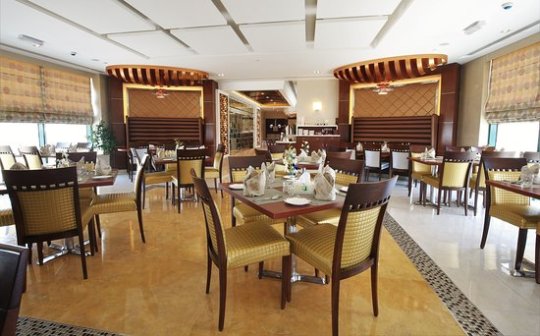


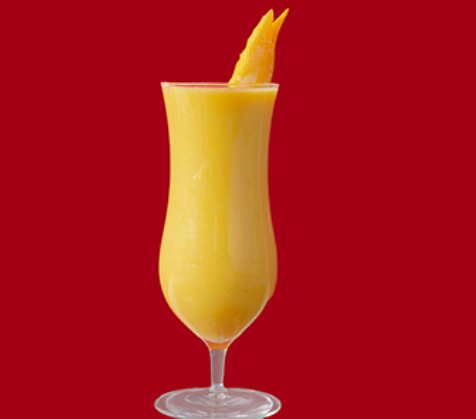
DAY TWO
To start my day, I decided to eat the national dish of Kuwait, which is Machboos. Machboos is a dish made with mutton, chicken, or fish over rice that was cooked in broth. The national dessert of Kuwait is Kanafa. Kanafa is a sweet cheese dessert topped with pistachios and soaked in syrup.


After my meal, I wanted to learn about the religion in Kuwait. The biggest religion in Kuwait is Islam. 99.97% of people born in Kuwait are Muslim, and 63.02% of people who immigrated to Kuwait are Islam. The secondary religion is Christianity, with 0.01% of people born in Kuwait are Christian, and 26.08% of people who immigrated. 60%-65% are Sunni, and 35%-40% are Shia's. There are two groups of Christianity in Kuwait. The first group is Iraqi Christians and Turkish Christians. They immigrated to Kuwait and assimilated into their society. The second group is Christian Kuwaitis. They arrived from the 1950s and 60s, mostly from when they were forced out of Palestine.
My first thing I did today was visit the Kuwaiti Maritime Museum. The museum shows the seafaring heritage of Kuwait. Seafaring is the activity of traveling on the sea, and it has a long history in Kuwait. Kuwaiti's used to use boats to bring water from the Shatt Al Arab waterway to the city of Basra because people were dying of dehydration. The museum is full of photographs that show the transport of water from boon to homes. It supposedly takes less than an hour to travel through.
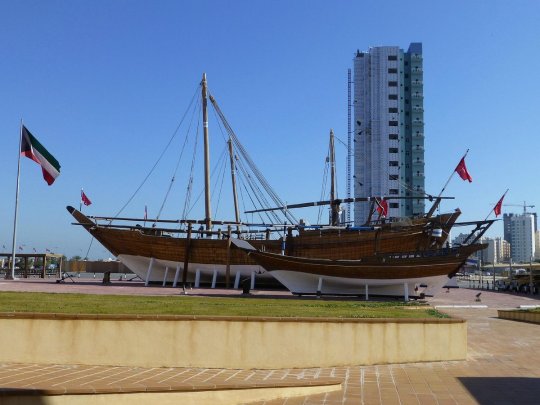
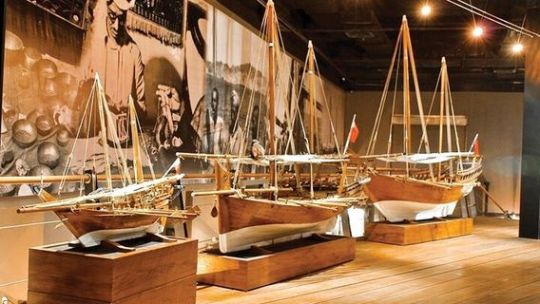
To eat today, I decided to go back to the Kuwait Towers and eat at the Horizon Restaurant, located in the main tower. The Horizon Restaurant is a buffet. The price to get in at lunchtime is 16 KD ($52.22) per person. They have Asian, Continental, European, French, Italian, Moroccan, Persian, and Seafood cuisines. I couldn't find any specific items, but this is good enough for me. To drink, I got a strawberry mojito, which cost 2.750 KD ($8.98). I know what you're thinking, “you are 17 what do you mean alcohol???” Well no! Alcohol is banned in Kuwait, so any alcoholic drink in nonalcoholic and safe for anyone.

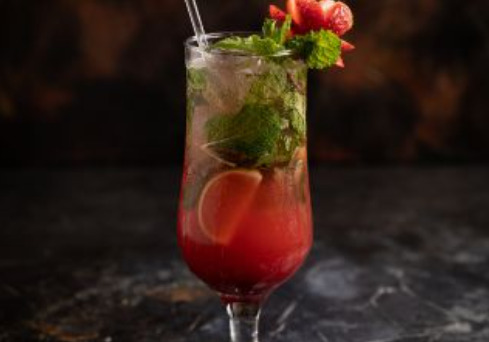
After lunch, I went to the Dream Factory. The Dream Factory is an escape room type place. They offer many courses, and you need to find clues to complete the mission in order to “wake up.” They offer 10 different rooms: Looney Woods, Circus Of Death, Space War, Secret of Kryptos, Lost City of Atlantis, Alice in Wonderland, Arcade Invasion, Chocolate Factory, Crystal Skull, and Haunted Mansion. I chose the Circus Of Death, described on their website by saying “You and your friends got a weird message from a stranger, It said 'Congratulations!!! You’ve been chosen to attend the greatest Circus show of all times, It happens only once every 50 years.. Come on and let’s have fun ;)' rumors are saying that there is always a group of people who disappear near this show’s location every 50 years. Do you have the guts to attend this creepy show? Sweet dreams ..” The duration is an hour and it is medium difficulty. The Dream Factory recommends 2–10 people working on the room at a time, lucky for me, I saw 2 strangers standing outside, and they agreed to work on the room with me! It costs 15 KD ($48.96) per person, and I agreed to pay for these strangers tickets, meaning I spent 45 KD ($146.87).


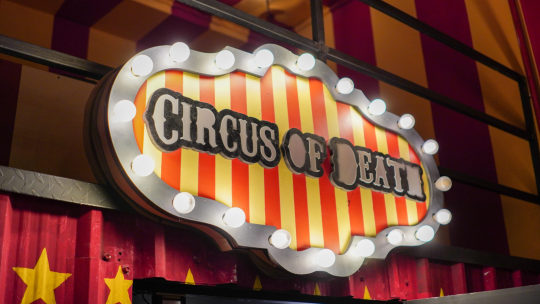

DAY THREE
My travels in Kuwait were extremely knowledgeable! I learned a lot about the history and culture of a country I would have never considered travelling to prior to this. My favorite thing I did was eat lunch in the Kuwait Towers. It is a very secluded restaurant, and they only allow 90 people in at a time, so it's so amazing I got there right when someone cancelled their reservations!
0 notes
Text
Venice Book Fair and Writers Festival 22th-23rd March 2024

Venice Book Fair and Writers Festival
When – March 22th – March 23rd
Where – visit their website for more information (https://venicebookfair.com/)
Venice, a city that rises from the lapping waters of the Veneto region in northeastern Italy, is a wonder to behold. Its 117 small islands, connected by a network of captivating canals, are home to historic buildings, bustling shops, and delectable restaurants that all reflect the city’s rich history.
Venice once basked in the golden age of the Renaissance as a major trading center and a hub of artistic and cultural production. Today, the city remains a monument to beauty with its timeless landmarks, such as the magnificent St. Mark’s Square, the stately Doge’s Palace, and the stunning Rialto Bridge.
And let us not forget the graceful gondolas that glide through the waterways, offering a one-of-a-kind adventure for visitors.
Venice has long served as a muse for poets, novelists, and playwrights. Its unique place at the crossroads of Europe and the Middle East has captivated writers for centuries, who have used the city’s rich history, serpentine waterways, and diverse population as inspiration for their works.
The city has also housed literary greats, such as Francesco Petrarca, who co-founded the Renaissance humanist movement, and Giorgio Baffo, who chronicled the city’s lively customs in the 18th century.
In the 19th and early 20th centuries, Venice was a hub for artistic and literary salons, where writers, artists, and intellectuals from all corners of Europe gathered to exchange ideas and create.
Today, the Venice Book Fair and Writers Festival continues this legacy of literary richness, uniting storytellers and book lovers from around the world to celebrate the magic of the written word...Continue reading
#book#world book far#book fair#book author#book writer#book publishing#book publishing platforms#self publishing#book writing#self publishing platforms
0 notes